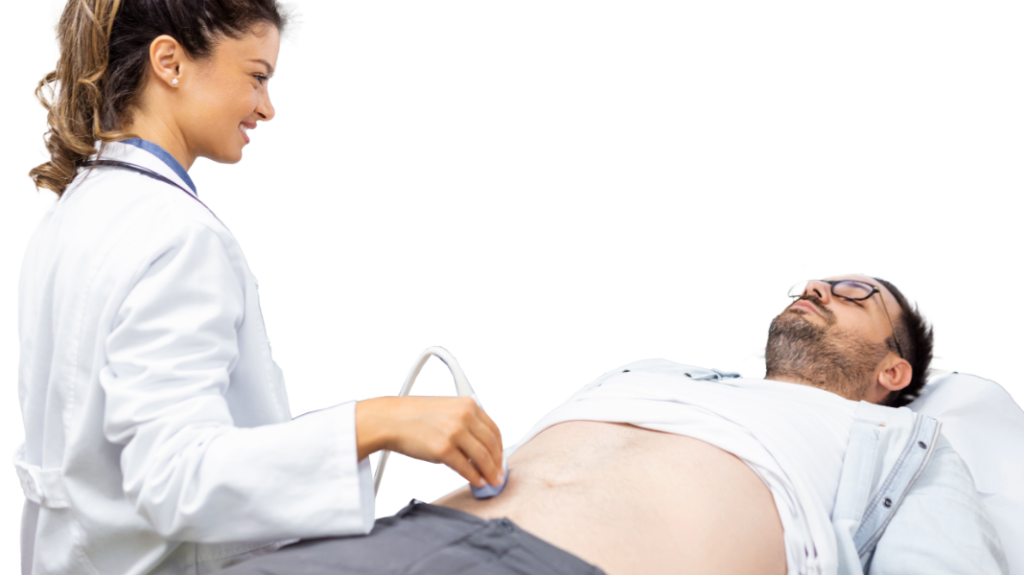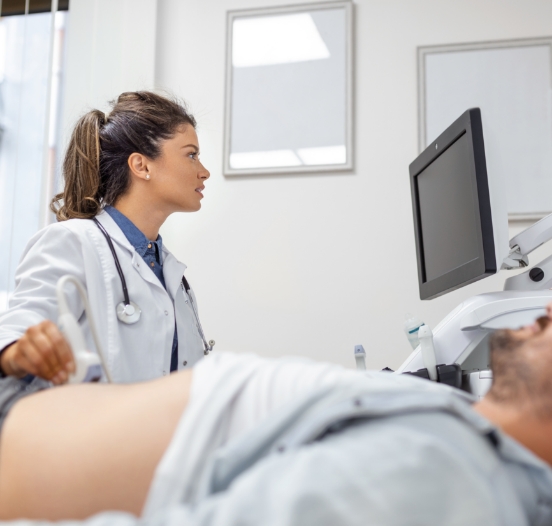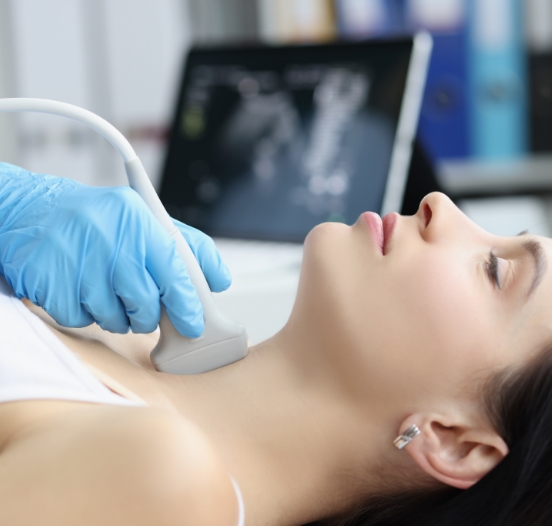ULTRASOUNDS

ULTRASOUNDS SERVICES OFFERED IN QUEENS, MASPETH, LOWER MANHATTAN, NEW YORK, BROOKLYN AND FLUSHING, NY
Ultrasound technology creates moving images of your internal organs that are invaluable for an accurate diagnosis. LocalMD’s offices in Queens, New York City, Flushing, and Brooklyn, NY have state-of-the-art ultrasound facilities for patient convenience. The practice’s experienced doctors and nurse practitioners use ultrasound to assess numerous symptoms of gastrointestinal, reproductive, endocrine, and other disorders. Call LocalMD to learn more about ultrasound’s uses or book an appointment via the online form today.

What is an ultrasound?
Ultrasound (sonography) uses sound waves to produce internal organ and tissue images. The ultrasound device generates high-frequency sound waves so high-pitched you can’t hear them. The machine’s transducer (a handheld instrument) emits these sound waves, which bounce off your soft tissues and return to the machine. Ultrasound technology converts sound waves into images you can see on a computer screen.
What is ultrasound’s purpose?
You might be familiar with ultrasound’s use in pregnancy, where it produces moving images of the fetus and gives you the first sight of your unborn baby. However, LocalMD also uses ultrasound for numerous diagnostic purposes, including examining your:
- Kidneys
- Bladder
- Uterus and ovaries
- Liver
- Gallbladder
- Spleen
- Pancreas
- Testicles
- Thyroid gland
- Blood vessels
There are several kinds of ultrasounds. The most common is a transabdominal ultrasound, where your provider passes the transducer over your abdomen. You might need an endoscopic ultrasound where the transducer goes down your esophagus for certain gastrointestinal investigations. Other specialized internal ultrasounds include transvaginal for examining the uterus and ovaries, transrectal for prostate gland exams, and transthoracic for clear heart images. Doppler ultrasound displays images of blood flow to detect problems like blocked arteries and deep vein thrombosis. Doctors also use ultrasound to guide them when performing procedures like needle biopsies or joint injections and to treat soft tissue injuries.
What happens when I have an ultrasound?
Having an ultrasound is a simple procedure available in-house at LocalMD. You lie on an examination table, and your provider applies a slippery gel to the area they wish to assess. The gel helps the transducer slide easily over your skin and improves image quality. You shouldn’t experience any pain during an ultrasound scan. You’ll feel the transducer moving over your skin, and your provider might occasionally apply some pressure to produce clearer images. Having an ultrasound scan typically takes 30-60 minutes. When it’s over, you can go about your day as usual. Ultrasound doesn’t use ionizing radiation like X-rays and CT scans, so it’s one of the safest diagnostic procedures. With their on-site, sophisticated ultrasound service, you get fast, seamless scans at LocalMD. Call the office to find out more, or book an appointment online today.

